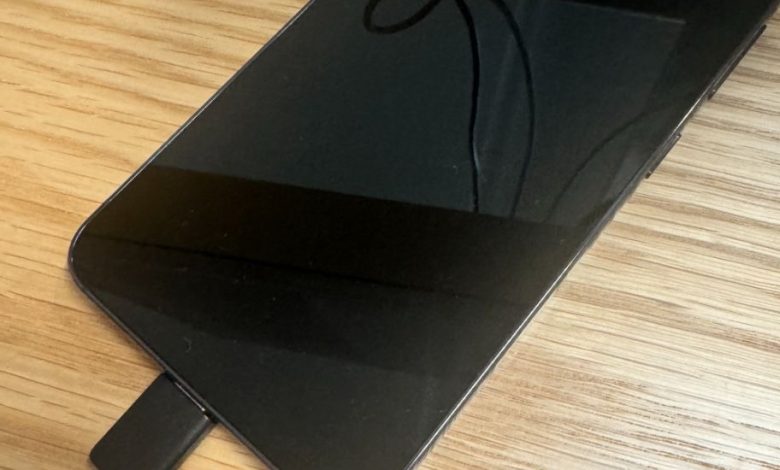We live in an age built entirely around convenience. Our daily routines are packed with tasks, responsibilities, and constant movement, and we are always looking for shortcuts to make life easier. One of those small habits that most of us barely notice, yet can have hidden consequences, is leaving a phone charger plugged into the wall when it’s not actually in use. It seems harmless — practical, even. You finish charging your phone, step away, and leave the cable dangling, ready for next time. It feels convenient, harmless, and efficient. But what could possibly go wrong?
I used to think the same way. I never considered the risks or the subtle energy waste that came from leaving these devices plugged in. Then one day, my electrician came over to fix a flickering light in my living room. While checking the wiring, he noticed the nest of chargers plugged into a nearby power strip — my phone, my tablet, and a few others I didn’t even remember owning.
“You really shouldn’t leave these plugged in,” he said casually, but there was an intensity in his tone that made me pause.
“They’re not charging anything,” I shrugged. “They’re just sitting there.”
He stopped his work for a moment and gave me a look that made it clear this wasn’t casual advice. “Exactly the problem,” he said.
Then he explained something that completely changed how I think about electricity, safety, and energy use in general.
The Hidden Danger in Every Outlet
Even when a charger isn’t connected to your device, it’s still drawing a small trickle of power. This is known as “phantom load” or “vampire energy.” You can’t see it, but your charger is alive — quietly converting electricity that it never actually delivers. Over time, this slow, constant draw not only wastes energy, it can also generate heat inside the charger.
And that’s where the real danger comes in.
If the charger is poorly made, old, or damaged, the ongoing current can cause it to overheat. Add a power surge or a fraying cord, and you have a recipe for a potential fire hazard. My electrician shared the story of a family whose home nearly burned down because of this exact habit. Their old, inexpensive charger had been left plugged in overnight, with no phone attached. At 3 a.m., it overheated and caught fire. Fortunately, the smoke detector alerted them in time.
He told me that this wasn’t an isolated case. Thousands of small electrical fires each year start from something as seemingly trivial as a forgotten charger.
How It Happens
When a charger remains plugged into the outlet, electricity continues to flow through its internal circuits. Even a tiny load generates heat. Most high-quality chargers can handle this for a time, but no device is meant to endure indefinite, constant power flow. Eventually, internal components wear down. The insulation weakens. And the next electrical surge or fluctuation could push it beyond its limit. A faint smell of burning plastic is often the first warning — if you happen to be nearby to notice it.
Leaving chargers plugged in also increases the risk of a short circuit. If the internal wiring frays or moisture enters the outlet, sparks can ignite nearby flammable materials — curtains, paper, bedding. It’s a small mistake with potentially catastrophic consequences.
The Hidden Energy Cost
Phantom load isn’t just a fire risk — it’s also quietly wasting electricity. One idle charger might only use a fraction of a watt, but when multiplied by the dozens of electronics in a typical household, the energy waste becomes significant. Scale that up across millions of homes worldwide, and the total energy loss is staggering.
Researchers estimate that phantom load accounts for up to 10% of household electricity usage in some countries. That’s not just bad for your energy bill — it’s bad for the planet. In a world increasingly focused on sustainability, reducing unnecessary energy waste is one of the simplest and most effective actions anyone can take.
Protecting Your Devices
Leaving chargers plugged in can also harm your electronics. Power surges, which are more common than most people realize, can damage chargers and the devices they power. A lightning strike miles away or a sudden drop in grid voltage can send a jolt through your home’s wiring. A charger left plugged in might absorb the impact, but its internal components could degrade. The next time you plug in your phone, it might overcharge, overheat, or even damage its battery. Surge protectors can help, but unplugging remains the safest method.
Simple Habits, Big Impact
Changing this small behavior can make a remarkable difference. I created a central charging station, unplugging all devices once charged. I installed power strips with switches for easy disconnection. I set phone reminders until the habit became automatic. And I invested in quality, certified chargers rather than cheap, unbranded ones.
These small steps save electricity, extend the life of devices, and reduce the risk of fire — a simple habit with a surprisingly big impact.
The electrician handed me a charger he had unplugged and said: “Small things cause the biggest trouble.”
He wasn’t exaggerating. Since then, I unplug every charger, laptop adapter, and even small appliances when not in use. My energy bills dropped slightly, but more importantly, I sleep better knowing I’ve removed a hidden danger from my home.
It’s such a minor effort — a motion that takes less than a second — yet it can save your home, your money, and possibly your life.
So take this advice seriously: Unplug your chargers. Not later. Not after one more use. Do it now.
It’s a tiny habit, but one that can make a huge difference — for your safety, your finances, and the environment.
